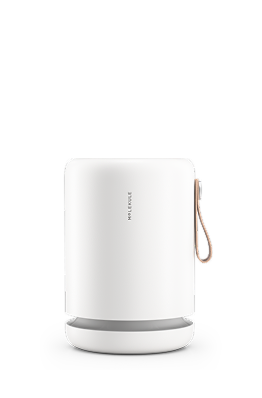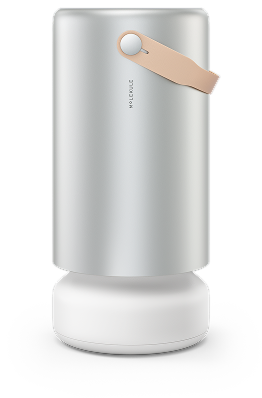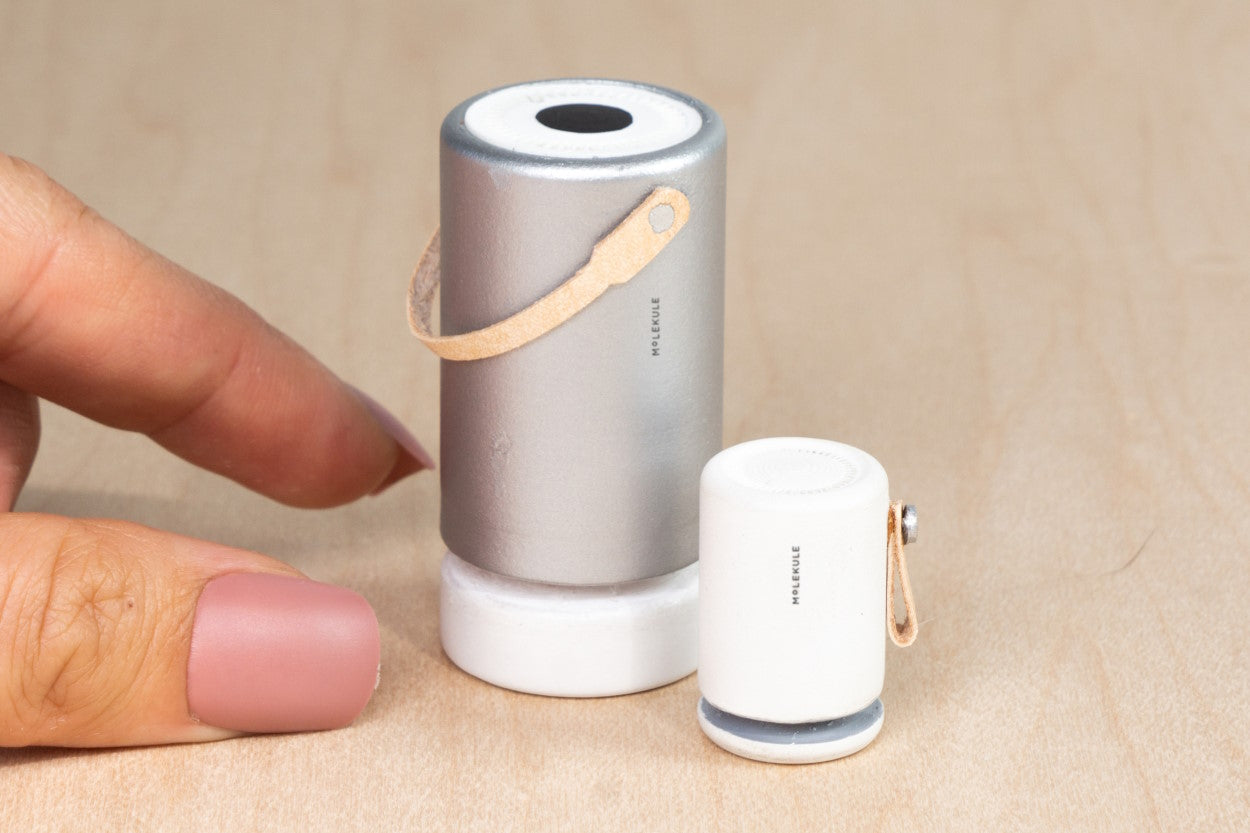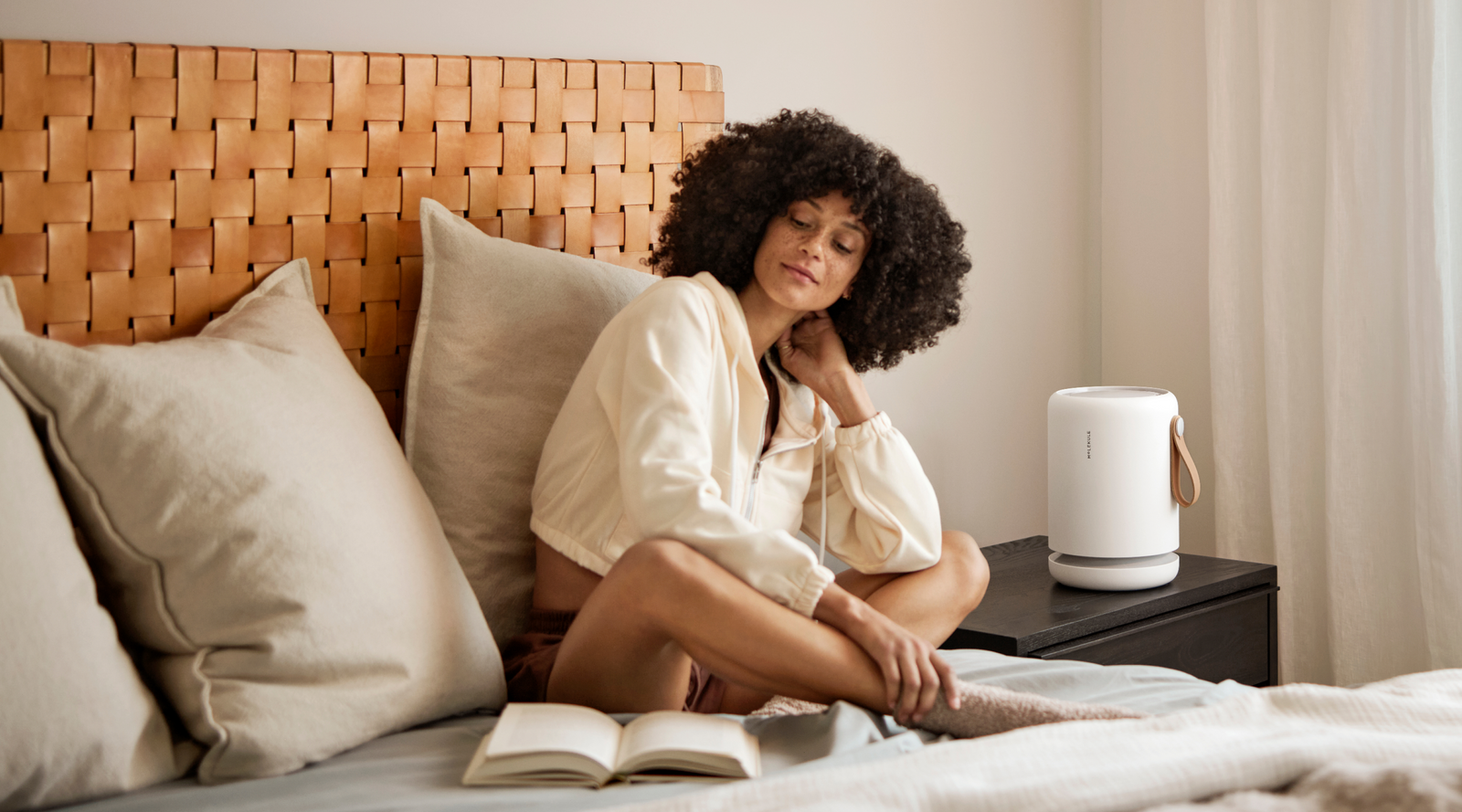Air purifiers can remove unhealthy particles and toxic gasses, which helps protect us from diseases made more likely by air pollution in addition to reducing allergy and asthma triggers. When choosing an air purifier it’s very important to have one that is sized to the space it’s used, and that it’s in a spot where you’re most likely to breathe the air it cleans.
Proper placement of an air purifier can increase its effectiveness by 2.5 times. Let’s take a look at a few different rooms, where you should put your purifier, and why.
Why is air purifier placement important?
Air purifiers need to be away from walls, furniture, and other obstructions. All effective air purifiers use a fan or blower to move air. Some complicated physics tells us that the best way to move air is with other air. That means the flow of air entering the purifier will pull more air in behind it in a long cone, and that air pushed out will push more air in front of it. Practically, this means your air purifier should stand alone with minimal intake or outlet blockage. If the intake is up against a wall, the cone-shaped inflow can’t form. The same applies to the outlet, it should be able to push a huge wall of air in front of it. If it’s blocked by a piece of furniture a lot of the purifier’s power will go to bonking against heavy upholstery instead of circulating the filtered air.
Circulating air helps to mix it. When air is allowed to settle and be still, pollution concentrations can be as much as 30 times higher in stagnant areas of a room, such as corners or close to the floor or ceiling.
Air purifiers will offer a bigger benefit if they are moving air where you breathe. In standing rooms, 4-5 feet off the ground works best. In sitting rooms 2 or 3 feet up is a little better.

Best place to put an air purifier in the living room
Living room air purifiers should be a medium between the middle of the room and near seating areas. The middle of the room is the best spot for an air purifier to handle air pollution, because it both has access to the most particles and can have the biggest impact on moving air in the room. There are also a few more angles to consider.
- Cleaned air needs to be inhaled, so while the center of the room is best for the purifier's technical performance, it should also be near any seating area so its performance matters. Try to give the inlet and outlet as much clearance as possible.
- If you know the source of the pollution, the purifier is best placed between people and the source of pollution. If there is car exhaust in the front of the house, it can be placed between the people and the front door. If cooking is happening, it should be between the people and the kitchen.
Where do I put my air purifier in my bedroom?
Bedroom air purifiers should be close to the bed. Most of us spend eight hours each night in our bedrooms while we sleep, which is a third of our lives. One of the best ways to get the most out of your air purifier is to be sure it’s in your breathing zone while you sleep. That means the air flowing out of the purifier is as close to your face as possible. Ideally the filtration will help to remove smaller particles that remain suspended for extended periods and the air circulation will help to push away larger particles that are stirred up by tossing or turning in sleep but settle within a few seconds. There are a few more things to keep in mind, though.
- If your skin is excessively dry in the morning the airflow from the unit could be causing more evaporation as it blows over you. First, alter the direction so it’s not blowing directly at you. If that doesn’t help, you may need to get a humidifier to raise the RH to at least 50%.
- If the purifier is too loud to sleep, don’t just turn it down. First try moving it further away, which won’t reduce its ability to remove pollutants.
- Be sure your purifier is rated for the room size. Even at night pollutants could be creeping back into your room.

Where do I put my air purifier in my kitchen?
In the kitchen, air purifiers should be placed where there is the least ventilation. Kitchens and cooking are often the biggest air quality threats in a home, and should all have adequate ventilation, but that’s not always the case. Open windows with a fast outdoor cross breeze is the best way to keep kitchen air healthy, and second behind that is a hood with a strong fan (at least 200 cfm) that pulls the cooking fumes directly into a vent to the outside. Hoods that vent over the stove are practically useless, though they do help a little with air mixing.
In kitchens that don’t have either of these types of ventilation, place the air purifier in the middle of the room and close to any people, and up on a counter if possible. Unfortunately whoever is cooking is likely to bear the brunt of the pollution exposure, but a purifier can help to prevent pollutants from accumulating to very high levels.
In kitchens that have some but not enough ventilation, put the purifier far away from the ventilation. You want the purifier to grab any particles it can and also mix the air for the ventilation to remove them on the other side of the room. Do keep in mind the following.
- Air purifiers with sensors that automatically react to air quality changes are helpful in the kitchen, like Molekule Air Pro and Molekule Air Mini+. These purifiers know to spin up if something burns, but then will quiet down before it’s time to sit. And if you can review a graph of the past week or so, you can see what cooking activities might be altered or skipped if they really make air quality bad.
- Over the past few years, evidence has come to light showing that burning natural gas to cook releases a considerable amount of gaseous pollutants that could trigger asthma in asthmatics, cause asthma in children, and even cause cancer. A particle filter like a HEPA filter doesn’t impact these pollutants, but activated carbon (which comes along with almost every HEPA filter) can remove, and Molekule’s PECO can destroy, many of these pollutants. Plenty of other technologies may also be effective, just be sure to look for some information on the purifier’s performance, ideally the amount of gaseous pollutants removed over time. If in doubt, find a filter with a large amount of activated carbon or charcoal, ideally measured in kilograms or pounds.
- Burning food and overheated oils can contribute a very high level of pollutants to the air. If a purifier is used in a kitchen that prepares food hotter than boiling water, it may become clogged with particles or saturated with gaseous pollutants and need more frequent filter replacement than recommended. Filters that are clogged won’t move enough air to be effective, and an activated carbon filter that is saturated won’t absorb any more gaseous pollutants and could re-release small amounts of what it has already captured.
Where do I put my air purifier in the basement?
An air purifier should be in the center of the largest space in the basement. Because they’re a little underground, it can be very difficult to get adequate ventilation or even a little air flowing in the basement. So place your purifier in the middle of the largest space and it will help to mix the air, prevent too much stagnation, and hopefully reduce musty smells. But basements do have a handful of their own air quality needs.
- If your basement has a moisture problem it could also have a mold problem. An air purifier may remove mold spores and even mitigate the stagnant smell, but until the moisture is dealt with and the mold removed, the problem will remain.
- Radon is a carcinogenic natural gas that can accumulate in basements. The only safe way to remove Radon is with a mitigation system that pumps air from beneath the building to outside.
Spaces that are similarly seldom used as the basement, like attics, laundry rooms, storage spaces, or garages will also benefit from a centrally located purifier. The moving air will help any ventilation there is to remove accumulating pollutants.







